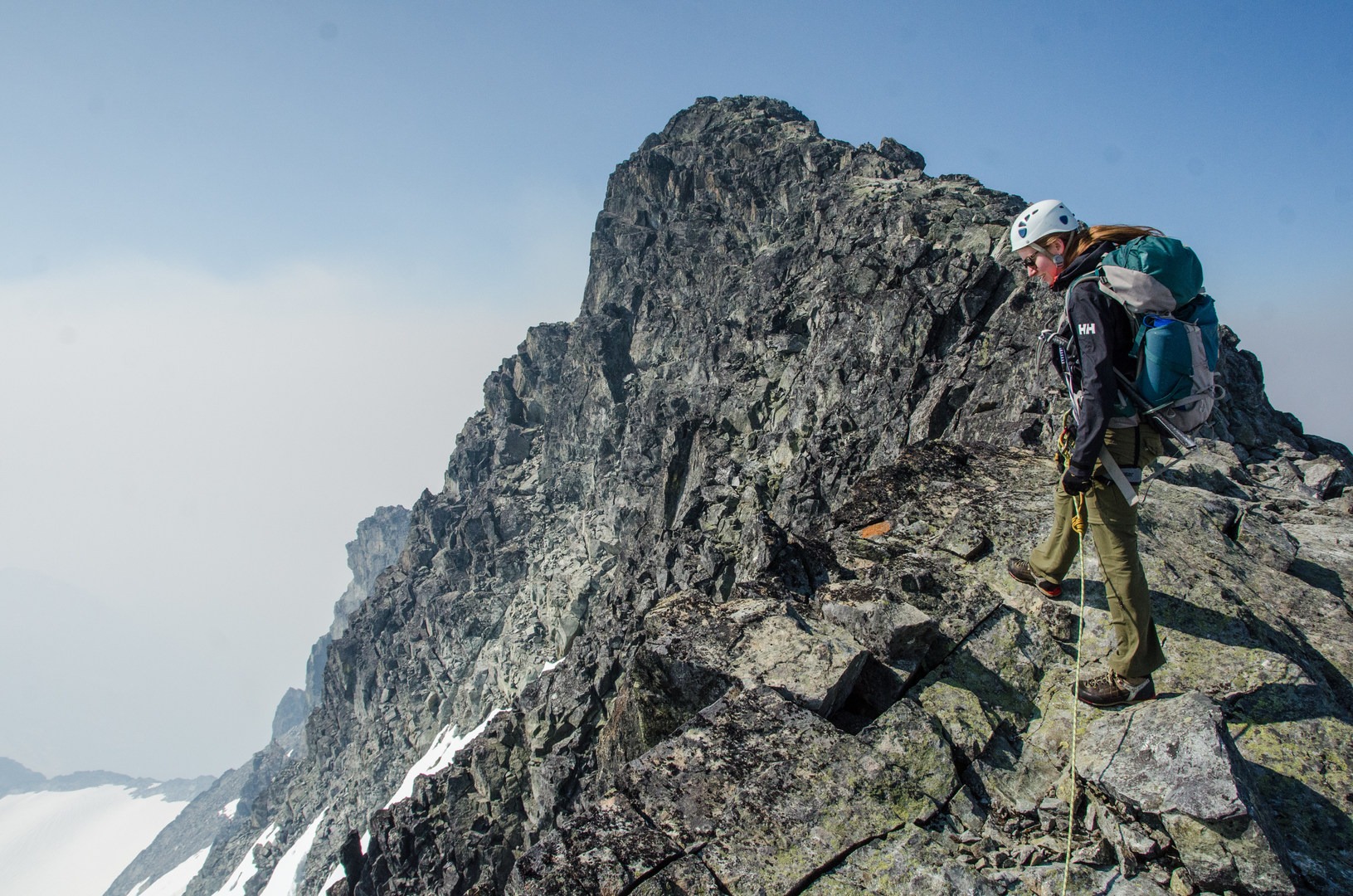You are here
Mount Matier is an excellent mountaineering route for newer mountaineers with some glacier travel experience and a lot of scrambling experience. In good conditions, the glacier is manageable with fairly straightforward routefinding. The trailhead, however, is an unsigned, hard-to-find dirt pullout on the side of the Duffy Lake Road. The pin in the description is accurate. As of June 2019, this route is no longer safe to access. Until further notice, the Cerise Creek area is closed. Two large landslides have wiped out large sections of trail. There is also risk of further slides. This has dramatically altered the approach route along both summer and winter trails. It also poses a continued risk. BC Parks has closed the area. For updates visit the Nlhaxen Conservancy.
The trail drops down to a log bridge river crossing and through a temperate rainforest for a couple of kilometres. You'll reach an abandoned logging road that continues for 2 kilometres until you dip back into the forest. From there the trail is well marked, rooty, but well maintained. Just beneath the treeline is the Keith Flavelle Memorial Hut. It is a voluntary donation hut, but it's maintenance is expensive, as is the firewood that is flown in by helicopter. Recently fewer and fewer people have been making donations, and there is talk that the hut will be passed off to a corporate group or to a park. Please help keep this piece of West Coast Heritage independent by donating as you pass through.
There is also a really great camping spot further up the ridge, which is gained by taking the trail heading north from the hut. The campsite sits on the ridge beneath Mount Joffre, and it offers quick and easy access to the glacier. It saves you about an hour of approach in the morning, and it's spectacular place to camp.
For the climb proper you'll ascend the hiking trail that goes up to the campsite. From the campsite you'll head across talus onto a snow bench. From here you'll work your way up the snow between a cliff band around 2,050 meters. Continue up the snow field, crossing a couple of small crevasses until you reach the Joffre-Matier Col. There is an outcropping of rock that you can bivvy on as well. Good stone bivywalls are already in place, making for decent shelter if you want to stop for lunch or use this as a launching point to climb a couple of different peaks. It also affords a good view of the northeast ridge of Matier.
Ascend directly toward the ridge, crossing a few significant crevasses. For the northwest route, head immediately west about 100 meters beneath the ridge. A slight ridge runs down and separates the north and the northeast face. Proceed about 250 meters and head straight up the 40-degree slope for the summit. There is rock near the top, but it's solid fourth-class granitic rock.
The north ridge has a small break 5 metres to the west of where it touches down. From here you can scramble up extremely loose 30- to 40-degree talus. It gains the upper ridge onto much better rock and proceeds along a spectacular narrow ridge to the summit. The estimated time to reach the summit from the hut is 6 to 10 hours. You can find a GPX file for this adventure here: http://www.movescount.com/move...
Mountaineering is very dangerous if you do not have the proper skills. If you have not taken a crevasse rescue course, seek the services of the Association of Canadian Mountain Guides.
Pack List
- Harness
- Helmet
- Ice ax
- Crampons and Mountaineering Boots
- Glacier travel kit (if you don't know exactly what goes in this, hire a guide or take a course)
- Rope
- Map and compass
- Bivy gear if you choose that option
- Sleeping bag, mat, stove, and food for the hut
- You could bring an alpine rack, but the terrain is at most fourth class.
- Pack (50 liter or 60 liter and a summit sack)
- Four-part clothing layering system that is appropriate for mountaineering (base layer, mid layer, shell, and belay layers)
- In winter
- Avalanche gear
- Skis/splitboard
- Be prepared to sleep outside on a weekend. The hut gets very, very busy. Snow cave gear like tea lights is recomended.
- Ice ax
- Crampons
- Glacier gear
- Picket
- 10-centimeter ice screw
Logistics + Planning
Current Weather: Powered by Dark Sky
























Comments
Sign In and share them.